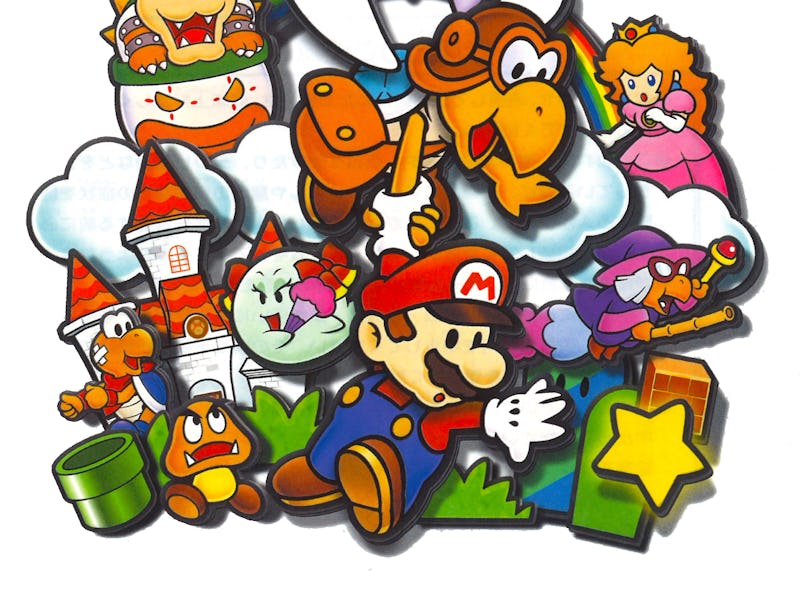You need to play the riskiest Mario game of all time on Nintendo Switch ASAP
A risk that paid off in spades.

First-party games are developed by the company that makes the console. (Think Zelda or Mario for Nintendo.) Third-party games are made by independent developers not affiliated with the console manufacturer, like an Xbox Series X game made by Ubisoft. But what in the world is a second-party game? Perhaps the best explanation comes in the form of a totally brilliant Nintendo throwback that’s available to play right now on Nintendo Switch as part of the Nintendo Switch Online + Expansion Pack.
Neither totally separate from the hardware company nor totally of it, the companies that make second-party games are loyal vassals of a larger company. Such companies can be necessary given the many technical requirements placed on companies with a global reach, like Nintendo in the 1980s. Intelligent Systems, originally created to help Nintendo port Famicom games to America and Europe, was one of these companies.
Spoiler alert: This is a recommendation for the original Paper Mario.
Eventually, Intelligent Systems was given a chance to develop their own games. One of them, Fire Emblem: Shadow Dragon and the Blade of Light, was a role-playing game released in 1990 that received poor reviews but eventually grew popular through word-of-mouth. But sales were so rough that Intelligent founder Toru Narihiro was told “do not release another title on a home console.”
That edict didn’t last, and six years later the company was given a chance to handle Nintendo’s biggest franchise of all with another RPG: Paper Mario for the Nintendo 64, which came out in 2000. Even though Nintendo had initially wanted the mighty third-party company Square to make the game, Intelligent Systems succeeded in making an absolute gem. It’s available right now if you’ve subscribed to Nintendo Switch Online + Expansion Pack.
Woah! That Mario looks like he’s made out of paper?
Paper Mario wasn’t the first Mario RPG. That was Super Mario RPG, which Square had developed in the first place. RPG was widely praised as a meshing of Nintendo and Square’s various strengths. When it came to their game, Intelligent Systems decided to stick with what they knew best: the world of Nintendo. Ryota Kawade, one of the game’s directors, said in an interview that with Mario games, “sticking to the ‘main road’ is the best. Plus, it would feel weird to have heavy themes like ‘betrayal’ in the overall cozy, heartwarming atmosphere of the Mario world.”
Paper Mario doesn’t feel weird, it feels like Mario.
The art style is similar to the hand-drawn style of Yoshi’s Island but expanded with the technical capabilities of the N64. The two-dimensional characters on a three-dimensional world do feel like the paper cut-outs suggested by the game’s title, and just like Super Mario Bros. 3 wanted each stage to feel theatrical, Paper Mario feels like it was made with scissors.
Swing that hammer, Paper Mario.
Another way the game stays on the “main road” is through its relatively simple plot. With Super Mario RPG, Square introduced new villains and twists to the Mushroom kingdom. Paper Mario sticks with a classic “Bowser kidnaps Princess Peach” scenario, deciding to focus on non-story elements instead. “It’s a fact that most games on the market today are prioritizing their storylines above everything else, but you know, part of it too is that our policy at Nintendo is not to compete in the same arena as everyone else,” Kawade said.
Rather than big plot movements, the game’s characters stand out. It’s a sweet touch that those who join Mario’s party are from the groups he’s usually stomping on, like Goombas or Koopas. There are good Goombas and bad Goombas, Mario learns early on, and that’s about all anyone really needs to know about the situation. But it’s nice to have Mario’s frequent enemies team up for once, and fun names like Goombario are fun. It’s just a lot of fun.
The mechanic that best sums Paper Mario is Action Command, where an attack can do bonus damage if nailed just right. It’s not a mechanic that can hurt, it can only provide more.